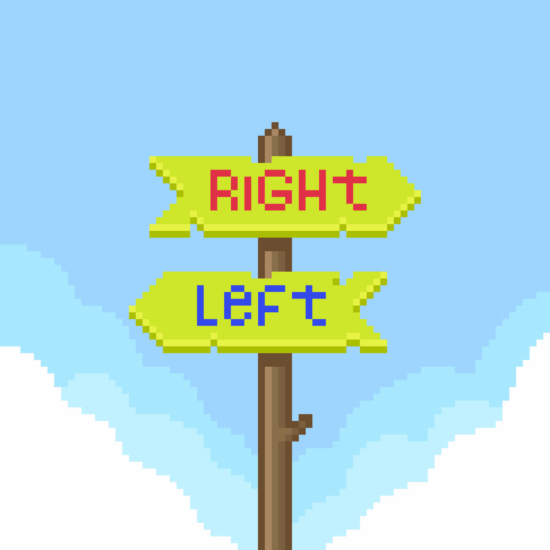Does Non-Linearity Actually Sell Video Games?
- February 4, 2021
- Michał Dębek
- What Exactly Is Non-Linearity in Games?
- Which Games Made Our List and Why?
- Game Data Breakdown: Sales, Average Prices, and Metacritic Scores
- Non-Linear Games and Their Sales Performance
- Linear Games and Their Sales Performance
- Does Non-Linearity Actually Sell Games?
- Game Sales: Beyond Metascore and Linearity

Competition in the industry is thickening. Back in 2019, there were 30,000 games available on the Steam platform. By 2024, that number has surged to over 86,000. Each year, Steam sees 12,000 to 18,000 new titles, which means roughly 230 to 340 releases every week. Many of these games fall into the “shovelware” category. However, their sheer volume creates significant competition for every new release, both strong and weak. In this competitive industry, where barriers to entry are relatively low, developers and publishers must identify the key factors that drive a game’s performance. So, does non-linearity in games play a role in determining that success?
We provide a new definition of this complex concept and analyze the sales of selected linear and non-linear games. Most importantly, we explore whether there’s a connection between a game’s linearity and its sales performance.
What Exactly Is Non-Linearity in Games?
Defining Non-Linearity in Games
There’s no single definition of non-linearity in games that captures all its complexities. The gry-online.pl dictionary defines a linear game as
one where you must follow a specific sequence of actions, with failure at any point blocking progress.
Thus, non-linearity means players don’t have to follow the creator’s intended order. Moreover, failing certain tasks won’t prevent them from moving forward. While this definition works in many cases, in others it becomes problematic. Under this definition, most strategy games, some simulators, and sports games—often not seen as non-linear—would also be classified as such.
At Try Evidence, we believe non-linearity is more than just freedom of action. It’s about the plot structure, its branching paths, and how the ending changes based on the player’s choices. For the purposes of the analysis below, we define non-linear games as
RPGs, action RPGs, adventure games, and adventure-action games, where the player’s decisions influence not just the course of the game but also the outcome.
The Debate on Non-Linearity: Player Freedom vs. Game Design
We acknowledge the industry’s view that almost every video game is non-linear to some degree. We also recognize the challenge of classifying sandbox games like Grand Theft Auto (Rockstar Games), Red Dead Redemption 2 (Rockstar Games), or stealth games like Hitman (IO Interactive) or Thief (Eidos Montréal), where every playthrough can vary slightly. One could also argue that no video game is truly non-linear. After all, everything in a game is ultimately programmed, and thus predetermined.
By using our working definition, we avoid getting into these complex debates, steering clear of philosophical dilemmas that resemble the ongoing discussions around free will. For centuries, some scientists have believed that humans have the freedom to make any choice. Others argued that all choices are determined by external factors, creating an endless cause-and-effect chain that governs everything.
The question of whether humans (and players) have free will remains unanswered, both in science and in gaming.

Non-Linearity as a Matter of Player Perception
To avoid getting caught in a similar dilemma, we adopt a compromise, one that also appears in philosophy.
What truly matters is how the player feels.
While players are always bound by causal laws (game code, the plans of programmers and writers), they can still feel as though they have the freedom to act differently and alter the world within the game. In this compromise, non-linearity and determinism are not at odds: players can experience the “thrill of free will” even within a fully programmed world.
In fact, usually when there’s an issue of linearity, it often arises from insufficient communication of the game’s rules. From player feedback in our laboratory, we found that confusion about the autonomy players have in the game plays a big role. Players depend on clear cues that outline the boundaries of their actions. Even in non-open-world games, these cues are essential for understanding their autonomy. When these cues are unclear or lacking, players can feel frustrated. Their expectations of freedom can clash with the game’s limitations, leading them to feel that the game promised more freedom than it ultimately delivered. While this is an important point, it’s such a big topic that we’ll save it for another post.
Which Games Made Our List and Why?
For the analysis, we focused on games released on Steam after April 2015, up until January 2020, provided they had been on the market for at least three months. We divided them into four groups: the best linear and non-linear games (Metascore > 85) and the weakest linear and non-linear games (Metascore < 60). If a game was initially released in Early Access, we excluded that data and used the official version 1.0 release date on Steam. We gathered sales data from SteamSpy and ratings from Metacritic.com.
Non-Linear Games
The non-linear category includes RPGs, action RPGs, and adventure games (including adventure-action games), where players can make decisions that affect not only the current course of the game but also change its ending.
Best (Metascore > 80)
- Grand Theft Auto V
- The Witcher 3: Wild Hunt (CD Project Red)
- Divnity 2: Original Sin (Larian Studios)
- Red Dead Redemption 2 (Rockstar Games)
- Undertale (Toby Fox)
- Metal Gear Solid V: The Phantom Pain (Konami Digital Entertainment)
- Resident Evil 2 (Capcom)
- DUSK (David Szymanski)
- Sekiro: Shadows Die Twice (FromSoftware)
- Monster Hunter: World (Capcom)
Weakest (Metascore < 60)
- Vambrace: Cold Soul (Dvora Studio)
- Fade to Silence (Black Forest Games)
- Dynasty Warriors 9 (Omega Force)
- The Technomancer (Spiders)
- Bohemian Killing (The Moonwalls)
- Metal Gear Survive (Konami Digital Entertainment)
- Grimshade (Talerock)
- Shadwen (Frozenbyte)
- Back in 1995 (Throw the warped code out)
- Those Who Remain (Camel 101)
Linear games
RPG, action RPG, adventure games (including action adventure), not fitting our definitione – so primarily those where the player can simply not care about making decisions which influence the ending of the game.
Best (Metascore > 85)
- Okami HD (Capcom)
- Disco Elysium (ZA/UM)
- Bayonetta (Platinum Games)
- Dark Souls III (FromSoftware)
- Devil May Cry 5 (Capcom)
- Rez Infinite (Enhance)
- What Remains of Edith Finch (Giant Sparrow)
- Ori and the Will of the Wisps (Moon Studios)
- Cuphead (Studio MDHR)
- Ori and the Blind Forest: Definitive Edition (Moon Studios)
Weakest (Metascore < 60)
- Sniper: Ghost Warrior 3 (CI Games)
- Subject 13 (Microids)
- Cross of the Dutchman (Triangle Studios)
- Tartarus (Abyss Gameworks)
- Empathy: Path of Whispers (Pixel Night)
- Cornerstone: The Song of Tyrim (Overflow Games)
- Memoranda (Bit ByterZ)
- Scrap Garden (Flazm)
- Armikrog (Pencil Test Studios)
- Orangeblood (Grayfax Software)

Game Data Breakdown: Sales, Average Prices, and Metacritic Scores
The lowest Meta rating in our list was 48 for Those Who Remain, and the highest was 96 for Grand Theft Auto V. The average (median) rating was 74.
The highest sales in the first quarter, according to SteamSpy, were recorded by Monster Hunter: World, with nearly 5.5 million copies sold. The lowest sales were tied between Back in 1995, Bohemian Killing, Empathy: Path of Whispers, Memoranda, and Scrap Garden.
In the first 6 months, Monster Hunter: World had the highest sales, with over 8 million copies sold, while Back in 1995 had the lowest. The median sales for the entire list were 78,500 copies in the first quarter and 87,000 copies in the first 6 months. We are aware that some games on the list sold significantly more outside of Steam (e.g., The Witcher 3: Wild Hunt, GTA V), but for consistency, we relied only on SteamSpy data.
The lowest recorded price for any game in the study during the first quarter post-release was $8.61, while the highest was $59.99. On average, games were priced at $23.59 in the first quarter and $23.20 in the first 6 months.
Non-Linear Games and Their Sales Performance
Metascores
The lowest score for non-linear games in our sample was 48 for Those Who Remain, and the highest was 96 for GTA V. The top 7 games with a Metascore above 90 in our list are: GTA V, Red Dead Redemption 2, The Witcher 3: Wild Hunt, Divinity 2: Original Sin, Undertale, Resident Evil 2, and MGS V: The Phantom Pain (listed from highest to lowest score).
Sales
The highest sales for non-linear games in the first quarter were recorded by Monster Hunter: World. The lowest sales were recorded by both Back in 1995 and Bohemian Killing, which had equal figures. The median sales for non-linear games were 142,500 copies in the first quarter and 156,500 copies in the first six months. Interestingly, the lowest-rated game in the sample (Those Who Remain) actually achieved impressive sales, with nearly 100,000 copies sold. This placed it 11th (out of 20) for non-linear games in its first quarter post-release.
Prices
The lowest recorded price for a non-linear game in the first quarter post-release was $9.99, while the highest was $59.99. On average, non-linear games sold for just over $41 in the first quarter and almost $40 in the first six months post-release.
Linear Games and Their Sales Performance
Metascores
The lowest rating for linear games was 57, shared by Armikrog and Orangeblood, while the highest rating was 92 for Okami HD. The average rating was 73.5, the same as for non-linear games. Linear games with a Metascore above 90 include Okami HD, Disco Elysium, and Bayonetta (listed in descending order of score).
Sales
The highest sales in the first quarter were achieved by Devil May Cry 5. The lowest sales were recorded by Empathy: Path of Whispers, Memoranda, and Scrap Garden, which had equal figures. The median sales for linear games were 40,500 copies in the first quarter and 84,500 copies in the first 6 months. These numbers are about half of the sales for non-linear games.
Prices
The lowest price for a linear game in the first quarter of sales was $8.61, and the highest was $59.10. On average, linear games were priced around $19 in both the first quarter and the first 6 months of sales.

Does Non-Linearity Actually Sell Games?
Linear games generally sold fewer copies than non-linear games, but there was no clear, direct relationship between a game’s linearity/non-linearity and its sales numbers (at least not when considering Steam sales). We found no significant connection between linearity or non-linearity and sales performance, whether for high-rated games (Metascore > 85) or low-rated games (Metascore < 60).
In other words, non-linearity alone doesn’t drive sales.
The presence of non-linearity doesn’t have a direct effect on a game’s sales figures. However, Metascore has a significant influence on sales. The correlation between ratings and sales is strong and clear.
In our sample, Metascore alone accounted for about 25% of the sales variation. While this is a considerable portion, the remaining 75% of sales variation comes from other factors related to marketing and game design, with linearity/non-linearity playing no significant role.
Regression analysis of the data revealed that
each additional point in Metascore increased a game’s sales potential by tens of thousands of copies in the first quarter.
These results align with a similar study by John Sacranie at Illinois Wesleyan University a decade ago, suggesting the model’s general applicability.
On average, games with a Metascore above 55 tend to sell at least 10,000 copies (regardless of genre or setting). If a game scores below 55, its chances of significant sales drop drastically. A Metascore above 60 can bring marketing attention, but games with this rating rarely exceed 100,000 units sold on Steam. Games scoring over 90, however, have a real shot at reaching over a million units sold in the first quarter.
When we included linearity/non-linearity in the Metascore model, it accounted for less than 30% of the sales variability. Therefore, the impact of linearity or non-linearity on Steam sales in the first quarter is minimal, contributing to just around 5% of the total sales variation.
Game Sales: Beyond Metascore and Linearity
Since Metascore and linearity/non-linearity only explain about 30% of sales volatility, what accounts for the remaining 70%? It might sound like a cliché, but it’s important to consider other key factors.
Different experts point to different factors that influence sales success. We believe the 2010 study by Henri Lindgren, a former producer at Nitro Games and now CEO of Lightneer, covers most of the important ones. He identified variables such as:
- Price,
- Developer,
- Genre,
- Graphics (and audio),
- Availability of a demo,
- Rating (as we discussed earlier),
- Popularity and player experiences with previous installments (if applicable),
- Player reviews and discussions on forums,
- Replayability value,
- ESRB/PEGI rating,
- Advertising and promotional materials,
- Word-of-mouth recommendations from friends (WOMM),
- Theme/setting,
- Publisher, including their efficiency and reputation.
There is no clear data showing which factors are more or less important for a game’s final sales numbers. Lindgren also argued that the industry’s belief in the extreme importance of media assessments for sales is a myth—though this is debatable in light of our own analysis. He also referenced EEDAR research, which found that marketing budgets have three times the impact on game sales compared to media ratings.
Another important factor, highlighted by Saiqa Aleem, Luiz Fernando Capretz, and Faheem Ahmed, and confirmed by our marketing experience, is “time to market”—releasing the game at the right moment.
More recent studies by the Kevuru Games suggest that the most important factors for a game’s success are:
- Genre,
- Platform relevance to the genre/setting/mechanics,
- Style and “vibe”,
- Replayability value.
It’s clear that within the remaining 70% of sales volatility in our model, many factors come into play. Every gaming marketer is familiar with this complexity.
One thing that seems almost certain, though, is that non-linearity isn’t a key factor in a game’s market success. So, the question remains: Is it worth investing significant resources into non-linearity?
*
Want to cite this article? Do it in an elegant way:
Dębek, M., & Kulpa, K. (2021). Does non-linearity actually sell games better? Retrieved from https://tryevidence.com/blog/does-non-linearity-actually-sell-games-better/



 (4.00)
(4.00)


